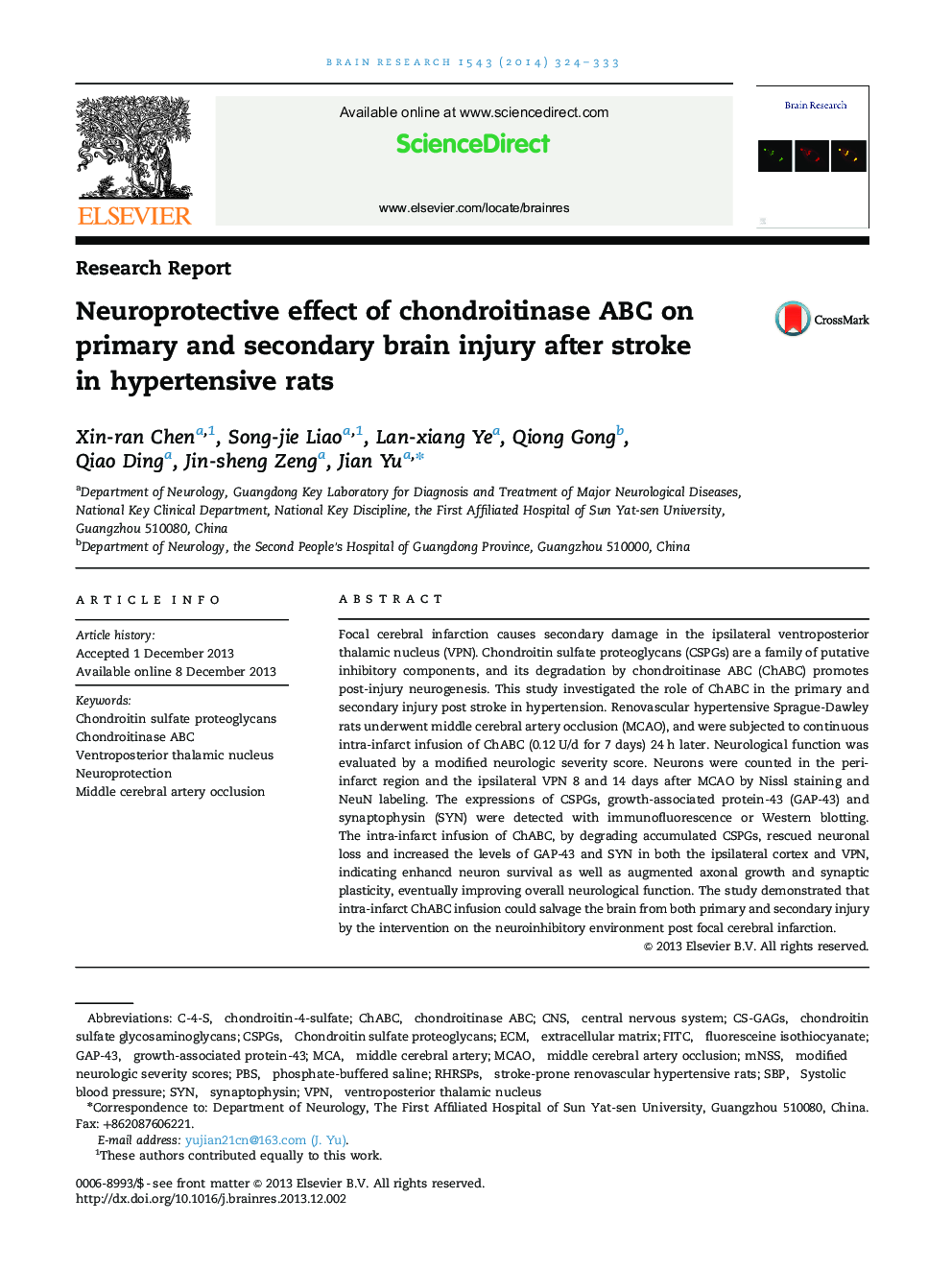| Article ID | Journal | Published Year | Pages | File Type |
|---|---|---|---|---|
| 6263472 | Brain Research | 2014 | 10 Pages |
â¢We focused on the secondary injury in remote loci connected to the infarction.â¢Renovascular hypertensive rat was used to study secondary injury following stroke.â¢Intra-infarct ChABC attenuated neurocan and NG2 in the remote ipsilateral thalamus.â¢Intra-infarct ChABC enhanced neural plasticity in both primary and secondary sites.
Focal cerebral infarction causes secondary damage in the ipsilateral ventroposterior thalamic nucleus (VPN). Chondroitin sulfate proteoglycans (CSPGs) are a family of putative inhibitory components, and its degradation by chondroitinase ABC (ChABC) promotes post-injury neurogenesis. This study investigated the role of ChABC in the primary and secondary injury post stroke in hypertension. Renovascular hypertensive Sprague-Dawley rats underwent middle cerebral artery occlusion (MCAO), and were subjected to continuous intra-infarct infusion of ChABC (0.12Â U/d for 7 days) 24Â h later. Neurological function was evaluated by a modified neurologic severity score. Neurons were counted in the peri-infarct region and the ipsilateral VPN 8 and 14 days after MCAO by Nissl staining and NeuN labeling. The expressions of CSPGs, growth-associated protein-43 (GAP-43) and synaptophysin (SYN) were detected with immunofluorescence or Western blotting. The intra-infarct infusion of ChABC, by degrading accumulated CSPGs, rescued neuronal loss and increased the levels of GAP-43 and SYN in both the ipsilateral cortex and VPN, indicating enhancd neuron survival as well as augmented axonal growth and synaptic plasticity, eventually improving overall neurological function. The study demonstrated that intra-infarct ChABC infusion could salvage the brain from both primary and secondary injury by the intervention on the neuroinhibitory environment post focal cerebral infarction.
